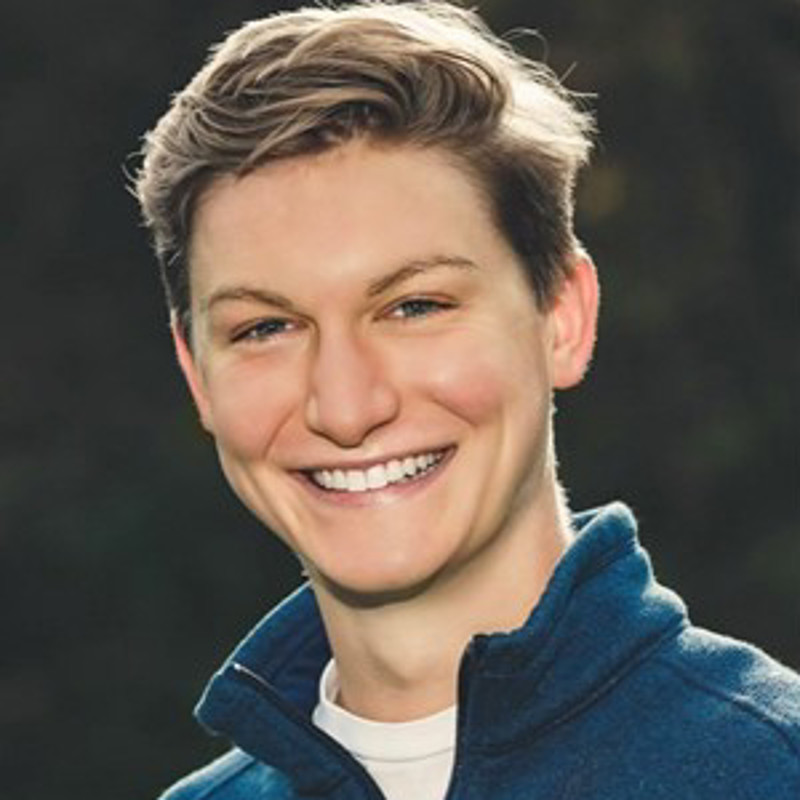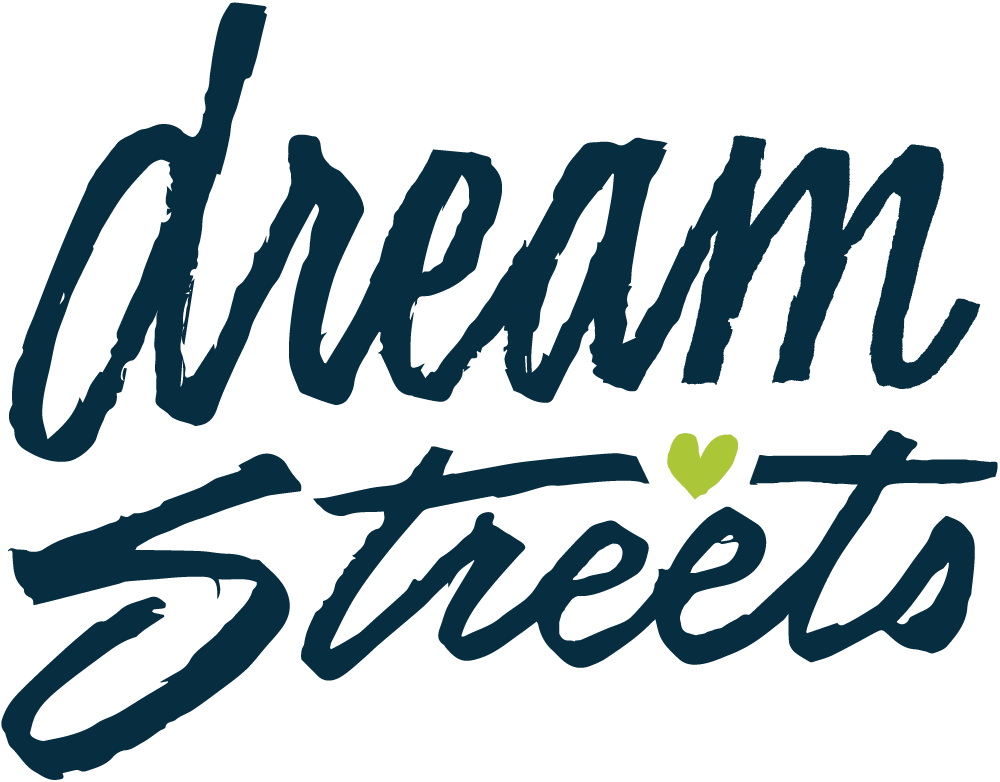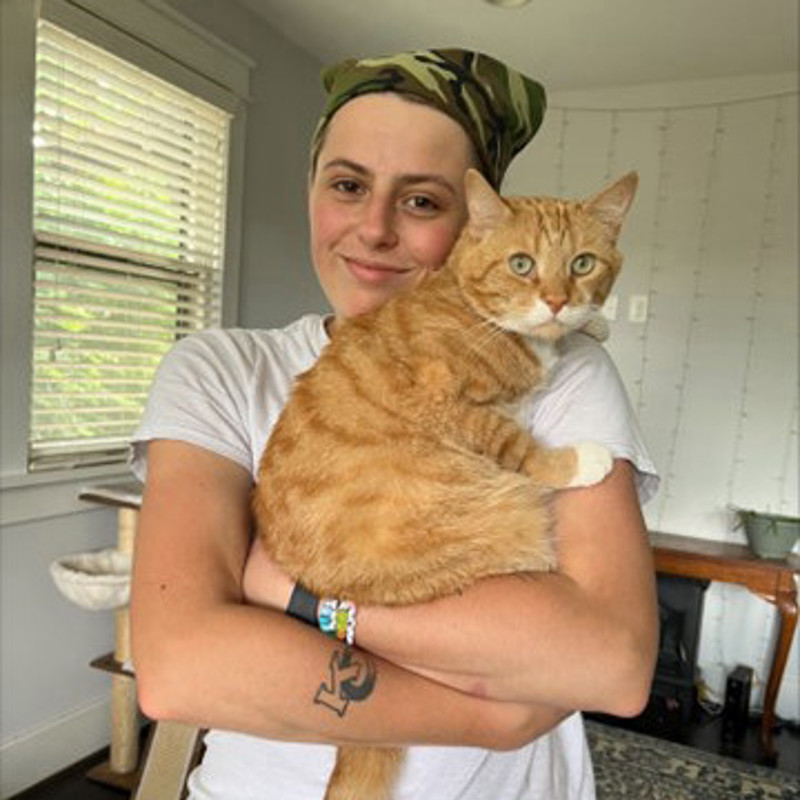This series highlights the stories of students, faculty & staff, campus partners, neighborhood agencies, and alumni who have been transformed by community engagement, meaningful relationships, and a commitment to serve.
The Stories of Engagement series is written & curated by Eleri Hadaway, senior English major and Social Justice minor and fourth-year OSL student worker.
October 19, 2023
Student Story: Brant
 Brant Simmons is motivated by growth, whether that’s in the gym, at school, or in his community. He is a leader, valuing achievement, determination, and relationships above all else. All of his life experiences thus far are a source of gratitude, even the hard ones. As a kid, he moved around a lot, always having to make friends and reestablish himself in each new place. From North Carolina, to Florida, to Ohio, to most recently Florida again, he learned how to push himself outside of his comfort zone to develop meaningful connections within his community. Now, as a sophomore Finance and Management double-major, his ability to take initiative, thrive in new situations, and connect with others is really coming in handy. With 19 credit hours, a finance-related internship at Wearwell LLC, a rigid workout schedule, and piles of homework, it would be easy to let something like service fall by the wayside. So why does he do it so faithfully? It all goes back to growth. It’s why he loves working out, and why he enjoys service: he can see marked change happening as a result of his dedication. “A huge part of leadership is helping others be what they couldn’t be without you,” he shared.
Brant Simmons is motivated by growth, whether that’s in the gym, at school, or in his community. He is a leader, valuing achievement, determination, and relationships above all else. All of his life experiences thus far are a source of gratitude, even the hard ones. As a kid, he moved around a lot, always having to make friends and reestablish himself in each new place. From North Carolina, to Florida, to Ohio, to most recently Florida again, he learned how to push himself outside of his comfort zone to develop meaningful connections within his community. Now, as a sophomore Finance and Management double-major, his ability to take initiative, thrive in new situations, and connect with others is really coming in handy. With 19 credit hours, a finance-related internship at Wearwell LLC, a rigid workout schedule, and piles of homework, it would be easy to let something like service fall by the wayside. So why does he do it so faithfully? It all goes back to growth. It’s why he loves working out, and why he enjoys service: he can see marked change happening as a result of his dedication. “A huge part of leadership is helping others be what they couldn’t be without you,” he shared.
Brant has been serving with Dream Streets for about a year. He originally got involved because his scholarship requires 40 hours per semester of community service, but it quickly became much more than fulfilling a requirement. After finding and signing up for the opportunity through Get Connected, the website designed to help students find service opportunities that align with their interests, skills, and schedules, he quickly became acquainted with the process and jumped right in. Dream Streets has three main focuses: job placement, after-school programs, and food distribution. Brant has mainly helped out with food distribution, often at the 17th & Underwood location. On delivery day, the volunteers start by picking up food at a grocery store. This food is typically either almost expired or is set to expire that day, so Dream Streets prevents food waste, while also providing food for those in poverty. Then, volunteers head to their designated location to set up tables to display the food. Odie, a regular shopper, often comes early to chat and help the volunteers set up. Brant has become friends with many of the regulars, developing connections throughout his visits to the various distribution locations. When everything is ready, shoppers go through the line, getting a certain amount of meat and prepared food and picking up as much as they need of other kinds of food. For many, this is all the food they will get for the next week, so they pack the boxes to the brim. Brant often helps shoppers carry the boxes, which weigh up to 50-70 pounds, to their houses or cars.
 Meeting the regulars at Dream Streets has opened Brant up to a new perspective and a renewed sense of gratitude: “It’s kind of crazy just seeing how grateful these people are for something so little as food, that I take for granted. I never have worried about where my next meal is.” He’s learned to be more grateful for other aspects of his life that he has taken for granted, too, like sight, walking, lifting, working, and going to school. He knows one regular who wanted to go to college but couldn’t go because he had to work to provide for his family instead. Brant respects these individuals deeply, declaring, “I’m not going to judge them for their situation… I don’t know what they’ve been through or the situations they’re in right now.”
Meeting the regulars at Dream Streets has opened Brant up to a new perspective and a renewed sense of gratitude: “It’s kind of crazy just seeing how grateful these people are for something so little as food, that I take for granted. I never have worried about where my next meal is.” He’s learned to be more grateful for other aspects of his life that he has taken for granted, too, like sight, walking, lifting, working, and going to school. He knows one regular who wanted to go to college but couldn’t go because he had to work to provide for his family instead. Brant respects these individuals deeply, declaring, “I’m not going to judge them for their situation… I don’t know what they’ve been through or the situations they’re in right now.”
It took Brant a while to find an opportunity that he was passionate about. He tried a variety of opportunities before he found Dream Streets, but after his first time volunteering, he knew he would be back. Thomas and Liz, two members of the Dream Streets team, welcomed him with open arms and have since become mentors to him. Through their exemplary leadership, they have taught him lots about meaningful community engagement. He reflected, “I feel more fulfilled. I’m doing something for other people and that brings me joy.” For anyone who is interested in volunteering at Dream Streets, it’s super easy to jump in, and they have regular opportunities for most days of the week. Check out their website to learn more and sign up for some opportunities!
Written by Eleri Hadaway
September 27, 2023
Student Story: Nora
 Nora Weir might be the busiest person in the world. Self-described as driven, stubborn, and focused, Nora has a multitude of commitments, and every single one matters deeply to her. In addition to being a senior Audio Engineering major and Theatre minor at Belmont, she works four jobs, juggling serving at a vegan restaurant, audio engineering for the bars downtown, freelance audio engineering, and freelance labor for Rhino Staging. On top of all this, she volunteers weekly with The Trevor Project, the largest LGBTQ suicide prevention service in the US. It seems like a lot, but she’s exactly where she wants to be. When she first visited Nashville at 15, she thought it was the greatest city on Earth, proclaiming, “Every single place that I’m going, there is somebody here who’s doing exactly what I want to do. There’s opportunity everywhere.” She knew she had to go to Belmont.
Nora Weir might be the busiest person in the world. Self-described as driven, stubborn, and focused, Nora has a multitude of commitments, and every single one matters deeply to her. In addition to being a senior Audio Engineering major and Theatre minor at Belmont, she works four jobs, juggling serving at a vegan restaurant, audio engineering for the bars downtown, freelance audio engineering, and freelance labor for Rhino Staging. On top of all this, she volunteers weekly with The Trevor Project, the largest LGBTQ suicide prevention service in the US. It seems like a lot, but she’s exactly where she wants to be. When she first visited Nashville at 15, she thought it was the greatest city on Earth, proclaiming, “Every single place that I’m going, there is somebody here who’s doing exactly what I want to do. There’s opportunity everywhere.” She knew she had to go to Belmont.
She still had a few more years of Kansas City high school to go, though, and they weren’t easy. Freshman year, Nora was outed as gay. It was an incredibly isolating time, especially because she was the only openly gay person at her all-girls school. She remembers, “I was the first gay person that somebody had ever met.” Amid questions of sexuality and gender, struggles with her peers and her dad not understanding her sexuality, and general confusion about how to feel and what to do, Nora turned to The Trevor Project. “The Trevor Project is always something that’s been really important to me,” she said. When she finally got to Belmont and realized she needed to do community service, The Trevor Project immediately came to mind.
 Because of how important and intense their work is, The Trevor Project has a rigorous, three-month training process. Nora works as a crisis counselor for the organization, providing text and chat services. Before she was allowed to chat with real contacts, she watched hours of videos, read the handbook, took quizzes, and participated in mock scenarios of varying levels of intensity. It was a lot to take on, but instead of deterring Nora, it just affirmed that she was cut out for the work. Counselors don’t offer advice or give directions; instead, they offer support and resources to empower the individuals to make their own decisions. “It’s really hard not to get attached to some of these kids who come in, because a lot of them are reoccurring contacts,” Nora shared. It can be tempting to check in on a situation they mentioned in a previous conversation, but the counselors don’t do this because they don’t want to create an environment of surveillance. The contacts drive the conversation, and they’re not required to share anything they’re not comfortable with. Overall, the process is designed to protect the contacts and the volunteers, with mental health resources and support groups provided for volunteers. It can be difficult for volunteers to process some of the conversations they have, but they are able to lean on each other and their supervisors when it becomes too difficult to handle on their own.
Because of how important and intense their work is, The Trevor Project has a rigorous, three-month training process. Nora works as a crisis counselor for the organization, providing text and chat services. Before she was allowed to chat with real contacts, she watched hours of videos, read the handbook, took quizzes, and participated in mock scenarios of varying levels of intensity. It was a lot to take on, but instead of deterring Nora, it just affirmed that she was cut out for the work. Counselors don’t offer advice or give directions; instead, they offer support and resources to empower the individuals to make their own decisions. “It’s really hard not to get attached to some of these kids who come in, because a lot of them are reoccurring contacts,” Nora shared. It can be tempting to check in on a situation they mentioned in a previous conversation, but the counselors don’t do this because they don’t want to create an environment of surveillance. The contacts drive the conversation, and they’re not required to share anything they’re not comfortable with. Overall, the process is designed to protect the contacts and the volunteers, with mental health resources and support groups provided for volunteers. It can be difficult for volunteers to process some of the conversations they have, but they are able to lean on each other and their supervisors when it becomes too difficult to handle on their own.
At this point, Nora has served over 140 hours with The Trevor Project, and counting. She is driven to keep volunteering by her commitment to helping people. “What makes me happy is making other people happy without having to diminish myself,” she declared. Sometimes, she has a day where she doesn’t feel like doing her shift, but she tells herself, “I’m doing something really, really important and I’m going to stay on.” Her advice for other students who might be struggling to find the time, the motivation, or the right opportunity for community service? Find something you like! Her work with The Trevor Project is so meaningful to her because it supports LGBTQ rights, something that she finds central to her identity and purpose: “Finding purpose, finding what you were put on this earth to do, is the most crucial, the first step, and for me I was really lucky that I know I was put on this earth to be an audio engineer, I know that I was put on this earth to be an advocate, I know that I was put on this earth to help other people. I think that community service is a really great way to find out what you’re doing.”
Written by Eleri Hadaway
